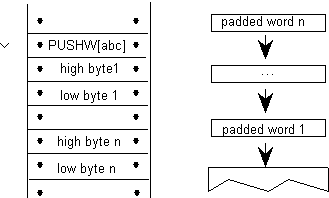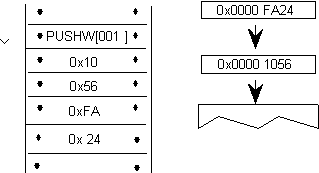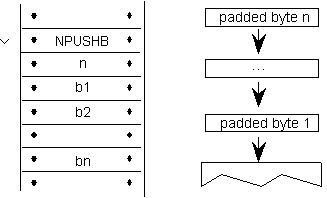
Code Range | 0x40 |
From IS | n: number of bytes to push (1 byte interpreted as an integer) |
Pushes | b1, b2,...bn: sequence of n bytes each padded to 32 bits (ULONG) |

Code Range | 0x41 |
From IS | n: number of words to push (one byte interpreted as an integer) |
Pushes | w1, w2,...wn: sequence of n words each sign extended to 32 bits (LONG) |
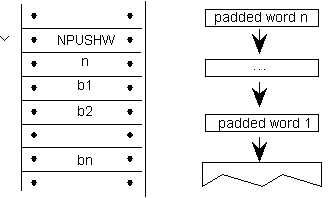
Code Range | 0xB0 – 0xB7 |
abc | number of bytes to be pushed – 1 |
From IS | b0, b1,..bn: sequence of n + 1 bytes |
Pushes | b0, b1, ...,bn: sequence of n + 1 bytes each padded to 32 bits (ULONG) |
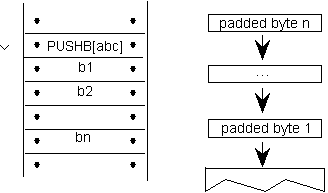

Code Range | 0xB8 - 0xBF |
abc | number of words to be pushed – 1. |
From IS | w0,w1,..wn: sequence of n+1 words formed from pairs of bytes, the high byte appearing first |
Pushes | w0 ,w1,...wn: sequence of n+1 words each sign extended to 32 bits (LONG) |
